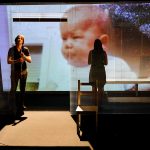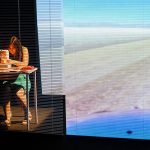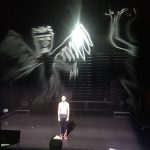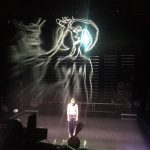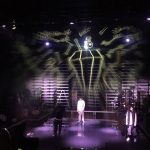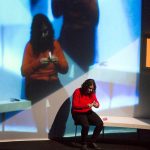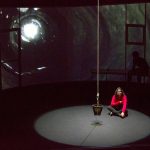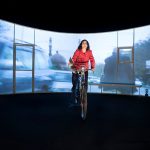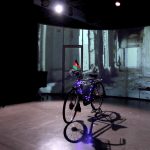Trained in Argentina and in Barcelona. He combines scenography with audiovisual direction and production for many shows. The essential pillars of his work are the interaction between performing action and the screened image and the concept of space as an expressive element that generates resistance and movement. Abroad he has recently worked with high level creators such as Sidi Larbi Cherkaoui (Milonga, 2013, and Shellshock, 2014) and in Catalonia with directors such as Carme Portaceli and Joan Ollé. At present, he devotes himself exclusively to his company La Conquesta del Pol Sud.
Home » Secció PAÏSOS I REGIONS » ESCENÒGRAFES PARTICIPANTS » EUGENIO SZWARCER
EUGENIO SZWARCER
One of the best compliments he recalls receiving for his work was from a woman director who called him to participate in a project “because you are the only person I know that, if it was necessary, would create an ugly scenography.” Born in Buenos Aires in 1976, Eugenio first trained in Argentina and later in Barcelona, where he studied Scenography at the Institut del Teatre. His career began in small format productions at the Sala Beckett, and has developed in partnership with directors such as Joan Ollé, Juan Carlos Martel, Carme Portaceli and Sidi Larbi Cherkaoui. Since 2009, he has put most of his energy into the documentary theatre company La Conquesta del Pol Sud, of which he is cofounder along with the stage director Carles Fernández Giua.
We meet Eugenio in a room at the Teatre Nacional de Catalunya, where they are rehearsing Raphaëlle, the third part of the trilogy on women, history and identity started in 2014 with Nadia and developed with Claudia (2016). Unfortunately, we had to turn down his invitation to visit him in Berlin, where he lives and, as he tells us, “goes to rest.” Thus, we have to an exercise our imagination when he insists that the space surrounding us is not at all like his studio or his usual work space. His facet as a scenographer cannot be separated from his facet as a video artist, two professional fields that, in his case, become one. The inclusion of videos in the performance space (while avoiding the standard screening formats and using volumes and props as support for the image) and the exploration of the possibilities of interaction between action on stage and the virtual nature of the image are some of the focuses of interest that have always revolved around Eugenio’s projects.
However, the artistic approach he has taken with La Conquesta del Pol Sud has given him a series of challenges. “I was very used to working with animation and, when I started doing Nadia, the decision that the whole video material had to be real was quite radical.” But above all he emphasises the creation process. With La Conquesta, a totemic idea of scenography is blurred, and he delves into a work process in which the needs of the production are much more horizontally distributed among the members of the team, the focus is more on dramaturgy than on technical solutions and the different roles are not understood as separate plots but as part of a single narrative.
The relation with the performers, who are not actresses but witnesses who speak in the first person, has also meant a great change in his way of thinking and designing. “We don’t make any decision about the space, the costumes or the mise-en-scène without discussing and agreeing on it; we don’t do anything without the main actress being fully aware of what we are saying, or without her feeling involved.” The aesthetic decisions, therefore, play second fiddle, and the link of the materials with the biographical or historical contents the performers channel become the main artistic challenge of projects that Eugenio describes as “the mise-en-scène of a relationship” and where both Carles and he physically share the stage and questions with the actresses, in an exercise of erasing the line that separates the inside from the outside.
It is not surprising therefore that Eugenio ends by saying that he finds fictional projects increasingly harder, although he seems a little surprised by his own words. “I find myself in a very intimate process, in which I have moved from thinking that I could do everything to realising that I can’t, and that I need to concentrate on what interests most me.” You can consult the projects of La Conquesta del Pol Sud on its website:
http://www.laconquesta.com


















